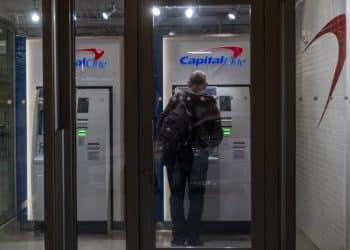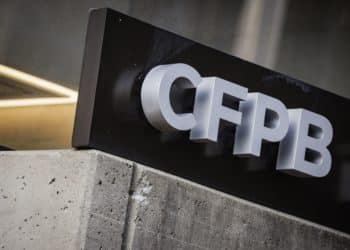What Needs to Happen for Mobile Mortgage Originations to Become a Reality
 It’s well known that the mobile channel is effective for simple transactions, such as checking balances, making deposits, and even paying bills. But what about the transactions that typically take place in the branch, such as loan originations? Will processing the lengthy documents for such products ever work on a mobile device? Do customers even want to perform such complex mobile transactions over mobile?
It’s well known that the mobile channel is effective for simple transactions, such as checking balances, making deposits, and even paying bills. But what about the transactions that typically take place in the branch, such as loan originations? Will processing the lengthy documents for such products ever work on a mobile device? Do customers even want to perform such complex mobile transactions over mobile?
“Mobility is raising customer expectations,” said Craig Le Clair, a vice president and senior analyst at Forrester Research. “Customers are asking for mobility and adapting to it quickly.” Brett King writes in the opening chapter of his new book Bank 3.0 that young people “expect the world to work” in mobile. “If you don’t — you’re irrelevant.”
John Fraser, VP of technology and operations at US Bank, pointed out that mobile is unique among major technological innovations to be adopted by consumers before businesses. “Tablets were used by consumers before businesses. With computers, with almost everything, it was the opposite.” 20% of US adults have tablets, according to Silanis VP Michael Laurie, and more than half now have smartphones.
Yet, the financial services industry continues to lag behind other industries in its use of mobile, Forrester’s Le Clair pointed out. Insurance companies such as The Progressive Corporation allow users to send documents related to automobile insurance accounts by taking pictures of driver’s licenses and car titles and registrations with their smartphones. Auto insurance providers also allow users to photograph or take videos of accidents and send in accident reports tagged with GPS data.
Ranjit Balaram, who works in mobile solutions for IBM, laid out the three stages of doing business on mobile.
“First, there’s informational, checking account balances and so on,” he said. “Then there’s transactional.” For financial services companies, this includes remote deposit capture of checks, bill pay, and the like. Finally, there’s value-added services, which can include offers, benefit programs, and extra services beyond traditional business, such as those offered by Progressive. All businesses should strive to be in this third zone, Balaram said, but the truth is that “most banks are stuck somewhere between one and two.”
Alan Varrasso, senior vice president of consumer banking IT at JPMorgan Chase, said that Chase is experimenting with using mobile devices to open accounts. In a pilot program in New York and San Francisco, Chase is experimenting with branches that feature more “interactive” open floorplans, and tablets that bankers and customers both use. Bankers sitting (or standing) with customers can open accounts and share some information that formerly would be on the banker’s screen, out of sight to customers.
A challenge to account origination on mobile is the idea of a “paper trail.” Michael Laurie, the co-founder and vice president of strategic planning at Silanis, an e-signature technology company, argued that electronic document storage was more secure than traditional file storage. A customer stops paying a loan, saying they never agreed to certain terms in the disclosure. In the past, Laurie said, “Banks would settle because they’ve lost the paperwork.” That doesn’t happen digitally.
Do the courts agree? Cases are being tried now that test this, as in Fieja v. Facebook, about which the courts ruled that it’s OK to have terms of services available through a hyperlink rather than laid out page after page before a user, which would be tedious at best on a smartphone.
“There is regulatory sympathy for the challenges of doing business on mobile,” said David Whittaker, Counsel for BuckleySandler LLP and a former lawyer at Wells Fargo & Co. Whittaker said the Consumer Financial Protection Bureau, for example, seems to be the most open to innovation among all the regulatory bodies overseeing financial services.
But Wells Fargo for one, Whittaker said, still does not allow account origination in the mobile space because of disclosures. Most people can’t easily retain (for example, by printing) electronic disclosure documents that appear on mobile screens. This can be problematic from a regulatory standpoint. For that reason, Wells Fargo has users move to the online channel in order to read and potentially retain disclosure documents; then they can move back to mobile.
Despite the disclosure challenges, Whittaker said mobile devices help FIs authenticate the reading of disclosures and documents by consumers. With geolocation data and the two-factor authentication possible over mobile devices, as well as the copious amounts of data created and retained by every click and swipe, it is easy to prove what users saw, when they saw it and for how long, and where they were when they saw it. Electronic documents can also be time-stamped and protected from modification far more easily than hard-copy documents.
Despite the mobile fascination today, loans will likely remain primarily a branch activity — though Brent King has pointed out that Countrywide Home Loans, the mortgage bank acquired by JPMorgan Chase, in its heyday originated more than 9 million mortgages online. But even in branches, mobile devices are taking over from traditional computers to facilitate originations, as Varrasso illustrated. The capacity to move the reading and signing of longer, more-complex documents to mobile devices is there, which means the days of securing a loan from the comfort of your couch can’t be far off either.











